HOW TO BUY FLOWERS SUSTAINABLY
With Valentine’s Day right around the corner, we caught up with Anna of Tales from Apple Tree House, an East Sussex based floral design studio and cutting garden with sustainability at its heart.
Read on to find out how to keep the planet in mind when gifting a beautiful bouquet…
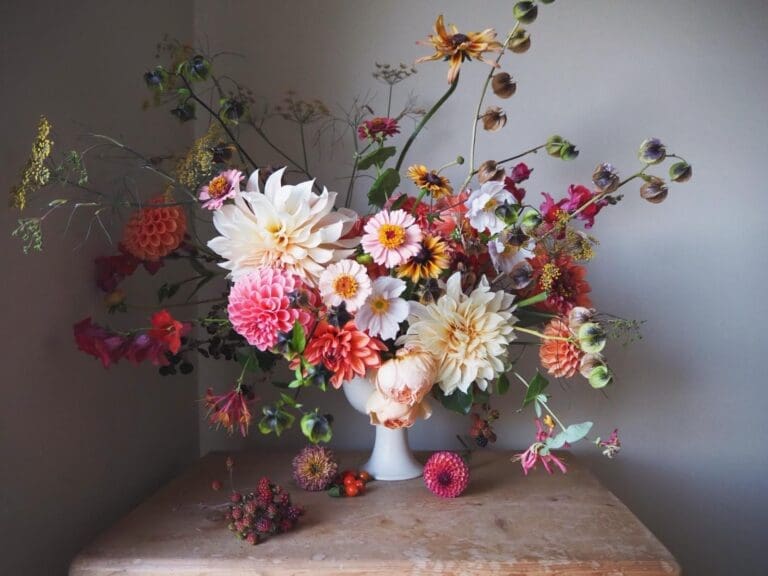
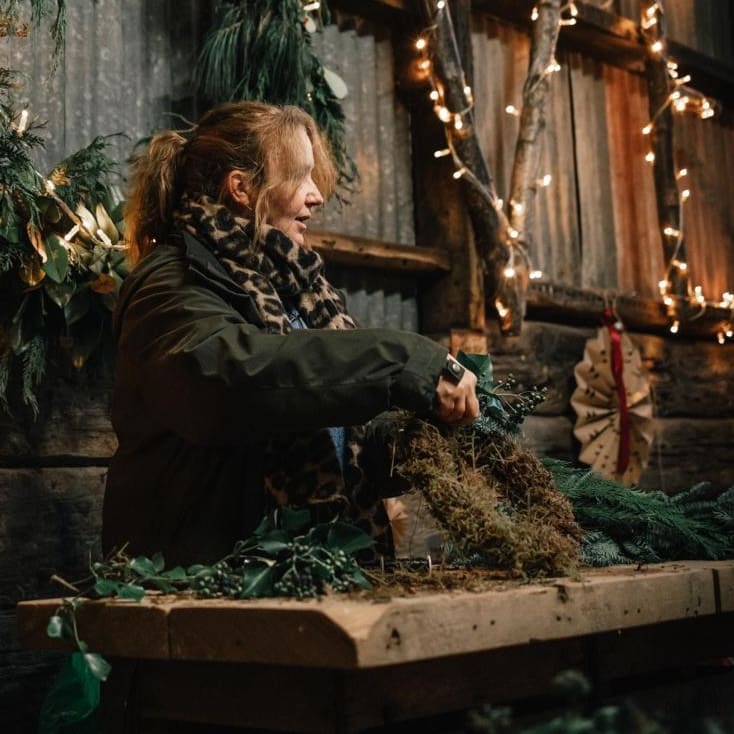

Photo courtesy of Tales from Apple Tree House
Q: If I shop sustainably from Tales from Apple Tree House, where do my flowers come from?
A: I would estimate that currently 80-90% of the flowers I use for weddings, events and gift bouquets come from local flower farms (all within 30 mins of my studio) or my own cutting garden with an element of foraged items used often as well.
I am working towards 100% British grown and local. Unfortunately, despite flower farming in the UK becoming a much bigger market, there is still a long way to go to produce the volumes required for the wedding industry, plus our weather is so unpredictable and we don’t have much in the way of fresh flowers to offer outside of April – October.
The flowers I grow and the flowers I purchase from local flower farms are all grown without chemical pesticides. The farms use organic practices but as of yet aren’t certified. They mostly use either their own made compost or peat free compost.
The few flowers I do purchase from my wholesaler are mostly shipped from the Dutch flower markets to the UK. I try to only choose flowers that were in season in the country they came from as this hopefully means they weren’t grown in heated greenhouses (although I can’t confirm if this is the case). Unfortunately, I have found that it is incredibly hard to find out anything about how a wholesale import of a particular flower is grown before purchase. All the wholesaler will tell us is the origin.
Q: Why is it important to buy flowers locally or from the UK?
A: If you buy flowers that aren’t grown in the UK you can be sure of a few factors:
- They will most certainly be covered in highly toxic pesticides so you should handle them with gloves.
- Because of the chemicals on the stems you can’t put them in your compost bin or garden waste as the chemicals then leak back in to the soil.
- They are often grown under forced conditions, in heated greenhouses which produce an enormous amount of CO2.
- They will have been shipped in refrigerated containers either airfreighted or on trucks (depending how far they are travelling).
- They will almost always be wrapped in plastic with elastic bands securing them.
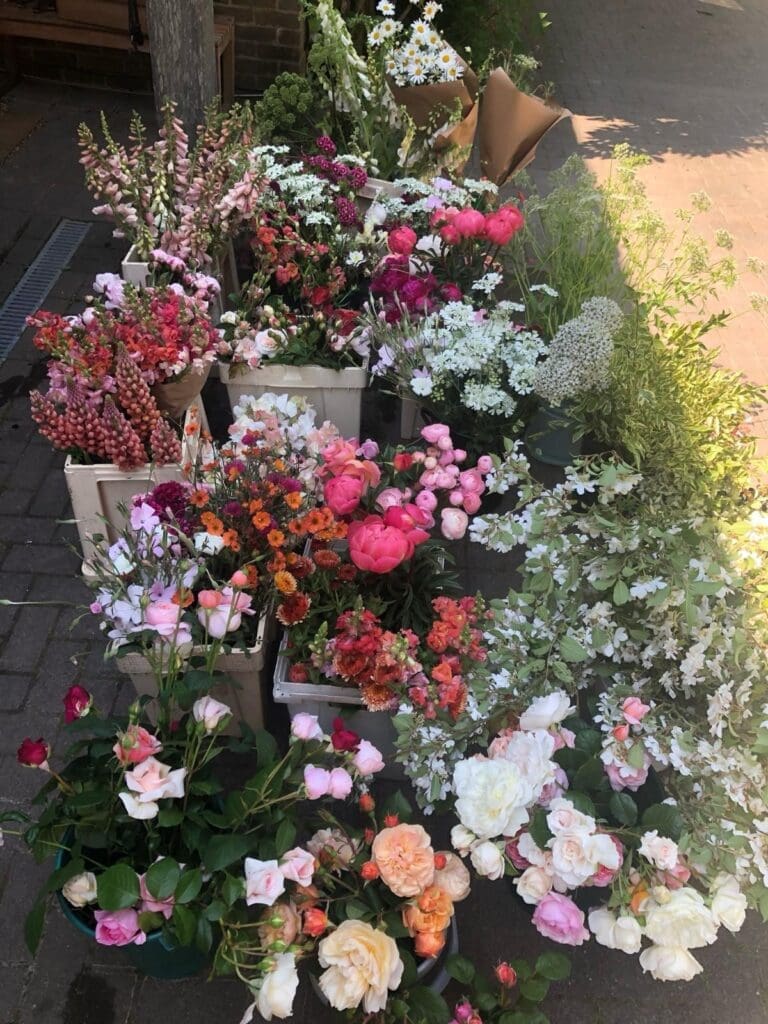


Photo courtesy of Tales from Apple Tree House
Q: How can I find local flowers?
A: If you want to ensure you only buy flowers from the UK then look at the origin label if buying from a supermarket or ask your florist where they came from. If consumers start requesting British grown then the demand will go up and the flower farm business will increase with the demand.
A better way to guarantee buying local is to look on the Flowers From the Farm website. They have a list of most of the farmers and growers by area. You can then click on the growers website near you and see what you can buy from them. You will find interesting varieties and unusual flowers that you won’t find in supermarkets or high street florists shops.
Not all growers sign up to Flowers From the Farm, like myself, so do some searches locally of small scale growers and/or floral designers who may be able to supply you with something local, seasonal and beautiful.
Benefits of buying from local flower farms:
- You will be supporting a small local business.
- Your flowers won’t have any pesticides or other nasty chemicals present.
- You can compost your flowers once they’re finished.
- There won’t have been any single use plastic involved in the production of your flowers.
- You will undoubtedly get something that is beautiful and unique.
- Your flowers will be seasonal.
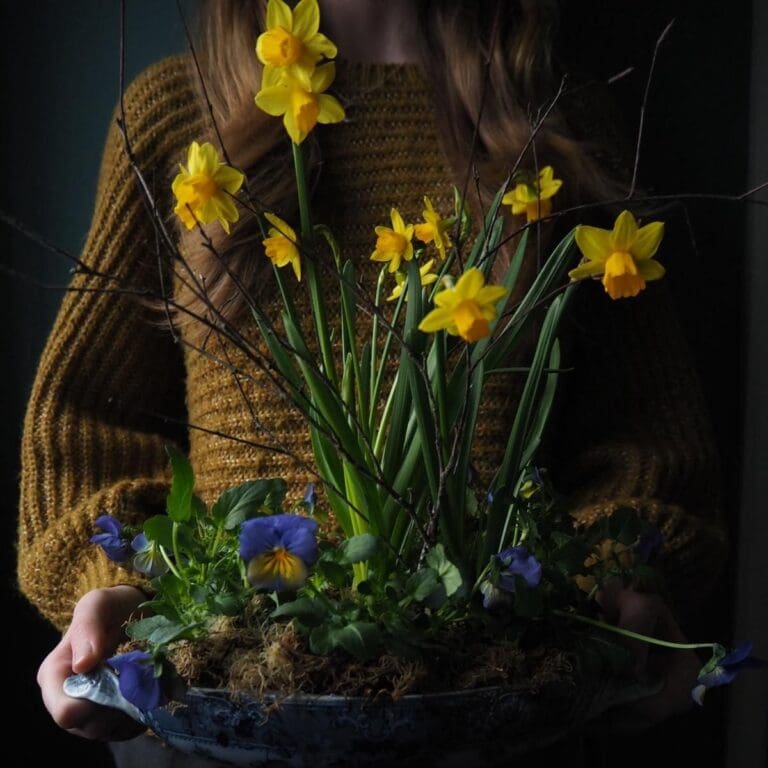

Photo courtesy of Tales from Apple Tree House
Q: If it’s more sustainable for flowers to be seasonal, what about the winter months?
A: In the Winter months when fresh flowers aren’t readily available locally, buying dried flowers or plants as gifts is a good alternative. However, be aware that a lot of dried flowers are dyed with chemical dyes or bleached for that boho look. Check before purchase if they have been dyed. A lot of flower farms dry their excess stock and sell it through the winter months and these tend to be natural and chemical free. I grow and dry a lot of my own flowers to use in the wreaths I make and installation work.
Q: What are some ways you make your business more sustainable all around?
A: There are many ways I’ve tried to make my business more ‘Green’.
- A big one in the floral industry is Floral Foam – I never use floral foam which is a horrible material that disintegrates in water into tiny micro plastics that find their way into our water systems down our drains. The actual foam block itself won’t biodegrade so ends up in landfill again leaking harmful micro plastics into our soil and rivers. This has been used for decades as it’s quick, easy and efficient for the florist. Thankfully, many florists now understand how harmful this product is to the planet and are using alternatives. We still have a long way to go before this is banned. Alternatives to floral foam are using flower frogs (which are thought to date back to Japan in the 14th century). Grave spikes, chicken wire and buckets are used for installation work which can be reused. You can also reuse plastic household containers like milk cartons, margarine tubs and ice cream tubs.



Photo courtesy of Tales from Apple Tree House
- I try to only work with and offer seasonal flowers and foliage.
- I work with clients to ensure as much of their event is either recycled or reused or dried.
- Vessels are reused, vintage or recyclable.
- My packaging for gift flowers is all biodegradable or recyclable.
- I don’t work with any dyed or bleached products.
- I support local flower farms.
- The water from my flower buckets is used to water my cutting beds or garden where possible. If I’m at a venue then I try to pour water away into flower beds so it isn’t wasted.
- I don’t offer Valentines or Mother’s Day flowers any more as there is so little available that is seasonal at that time of year or locally grown. Instead, I offer seasonal Spring bulbs planted in beautiful vintage vessels. Once the bulbs have finished flowering you can remove the bulbs and soil and replant outside to flower again the following year. The vintage vessel can then be cleaned and used in the home.
- I offer a bouquet/buttonhole drying or pressing service for brides and grooms so that they have a keepsake from their wedding day.
- I’m moving my own flower growing away from Annuals and more towards perennial planting as these plants tend to need less watering. They generally need less tending to as well and can be divided to increase your plant stock without the need to keep buying and consuming more.
- I create pressed flower art by pressing excess stems or if I find a particularly beautiful stem that needs preserving.
- I responsibly forage in the countryside. There are guidelines online about where and how to forage responsibly. Anyone considering foraging should read these and always check who owns the land before picking anything.
Q: Anything else you’d like flower buyers to know?
A:
My small floral design business is not, by any means, completely green as yet. If I could source larger quantities and more variety of flowers locally then I would be a bit closer to the 100% target. There is one other major factor that hinders this target and that is that our climate in this country is very unpredictable. For example, one year we may have a bumper crop of Dahlias as early as July then the following year they don’t flower until late August. This unpredictability means the wedding and events industry still relies too heavily on wholesale imports.
As consumers there are things we can do to reduce this with smarter purchasing, asking where things have come from and how they were grown before you consider buying them.
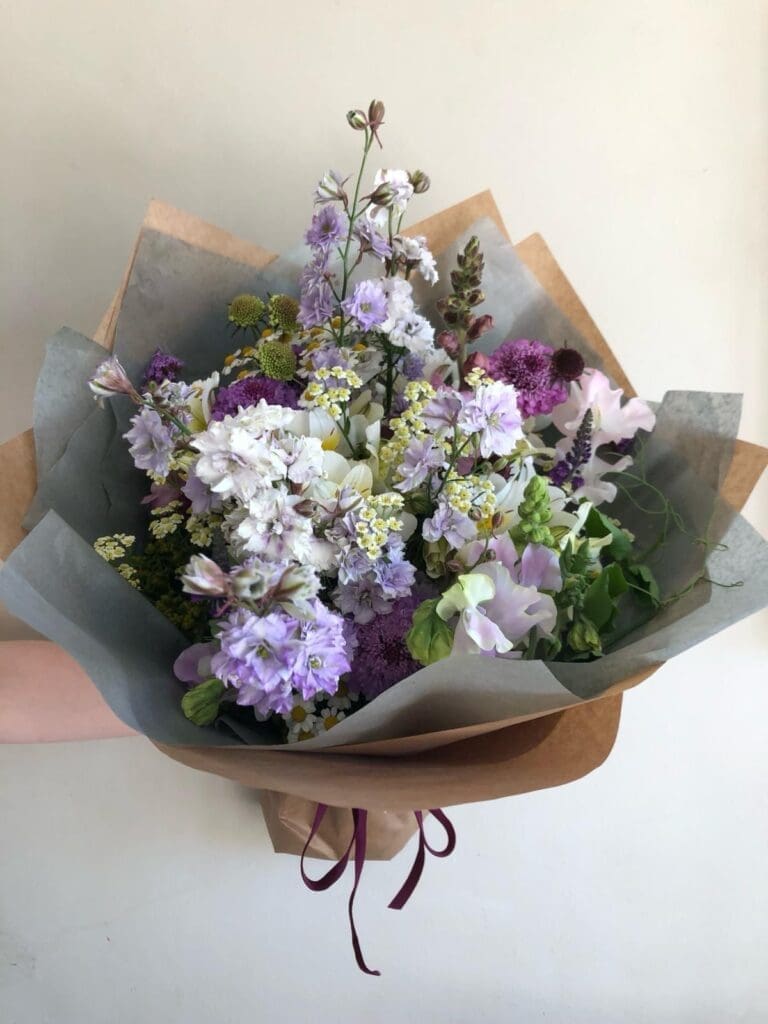

Photo courtesy of Tales from Apple Tree House
A big thanks to Anna for answering our floral questions.
Be sure to take a look at Anna’s Beautiful arrangements, vases and artwork at Tales from Apple Tree House right here.
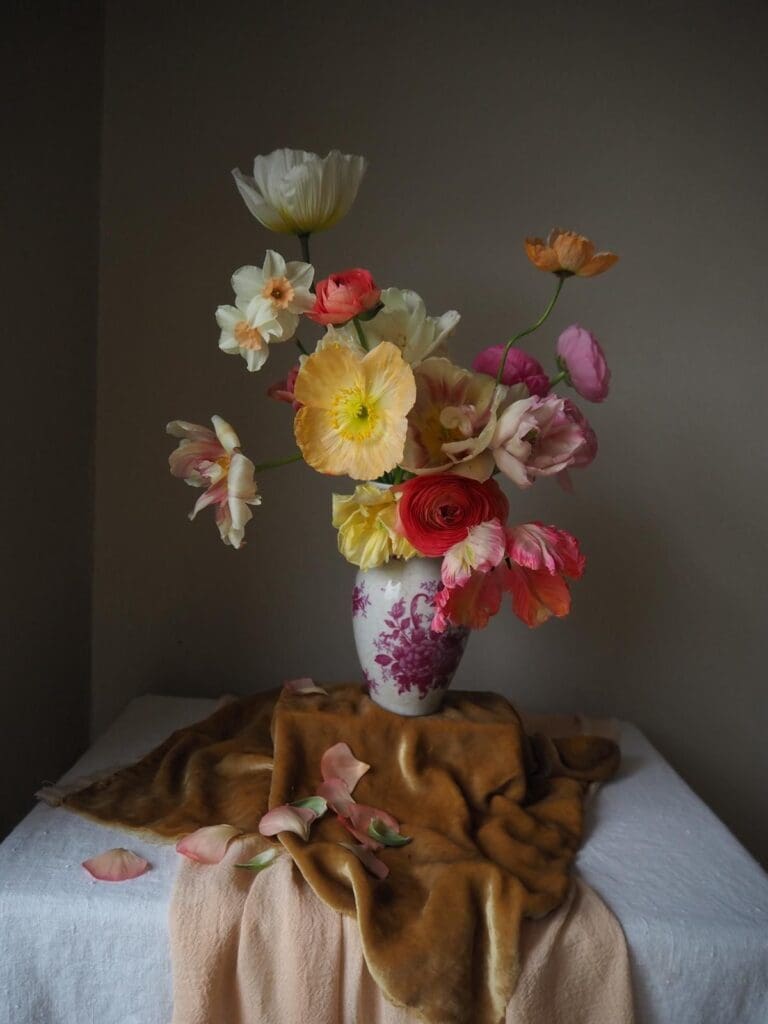

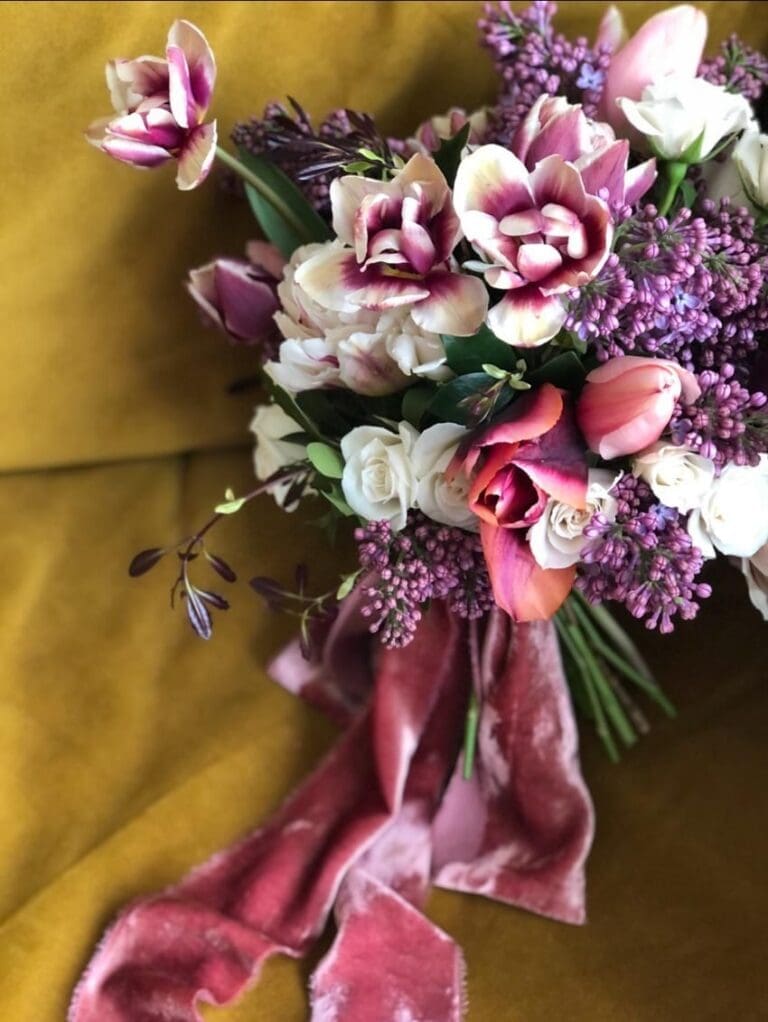

Photos courtesy of Tales from Apple Tree House
